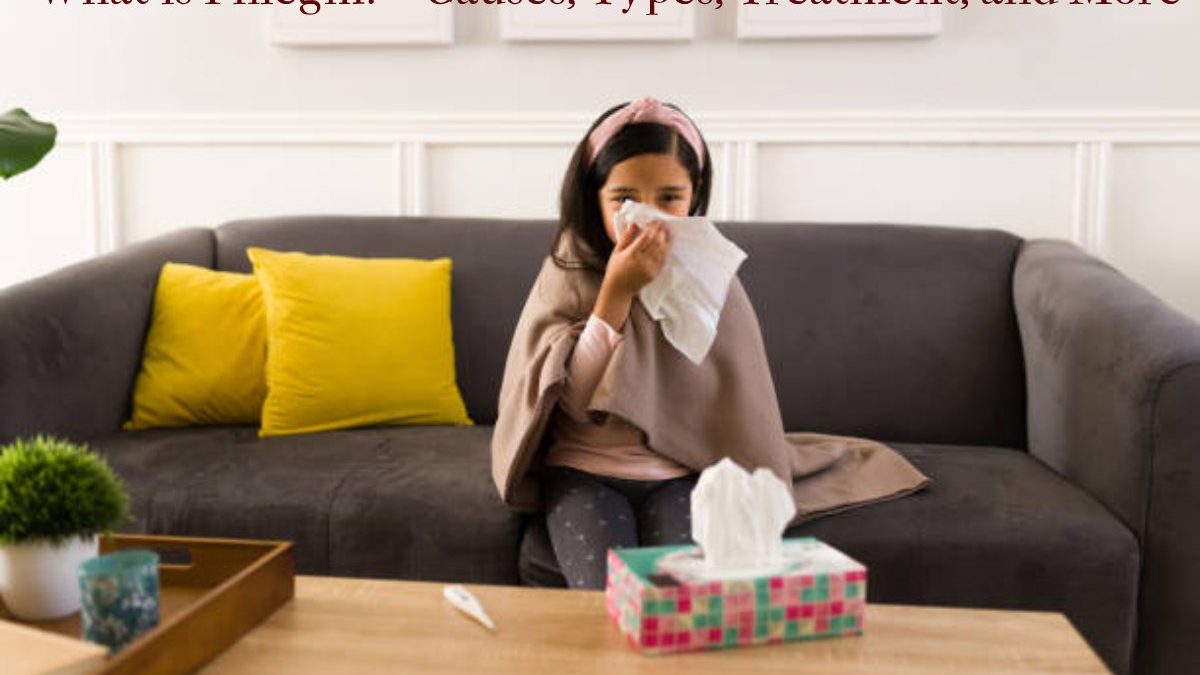Phlegm is a fluid produced by the cells that cover it. A. Nose, l. A. Throat, upper respiratory tract, and lungs.
While the name “phlegm” is often used interchangeably with “mucus,” here are critical differences between the two:
- Mucus harvested by the nose and sinuses
- It is thicker than mucus
- Excess mucus can clog your lungs and make you cough
Table of Contents
Causes of Phlegm
A change of conditions and irritants can cause it.
It includes:
- Bacterial infections such as bronchitis, sinusitis, and pneumonia
- Viral infections such as the common cold and l. A. Influenza (flu)
- allergies
- Asthma
- Chronic lung diseases such as chronic obstructive pulmonary disease (COPD), cystic fibrosis, and bronchiectasis
Types of Phlegm
Although usually transparent, it can take on different colors depending on its cause.
- Clear Phlegm: Clear phlegm is the most common type of phlegm, then frequently trigger by irritation, allergy, or viral infection.
- Green or Yellow Phlegm: It may mean that your body has sent white blood cells to it. A. Nose, throat, or lungs to combat sinusitis, pneumonia, bronchitis, or other infection. Cystic fibrosis (a chronic disease) can also cause it of this coloration.
- Brown Phlegm: when l. A. Old blood mixes with it. A. Phlegm, the fluid may turn a shade of brown. It is more common in people living with chronic lung disease.
- White Phlegm: This shade can signify a viral infection, allergies, or asthma.
- Black Phlegm: Although less common, it is usually a sign that you have inhaled something black, like smoke or coal dust. Black phlegm is often related to smoking and can also cause by cystic fibrosis and pneumoconiosis, linked to coal miners.
- Red Or Pink Phlegm: It is usually related to l. A. Blood. In this case, always see a doctor, as it could be associated with a severe infection, bleeding in the lungs or airways, or cancer.
Phlegm Treatments
If you have extra phlegm, some natural home remedies can help you get your body back to normal.
It is what science says about some common treatments to get rid of it.
Humidifier
Keeping the air around you moist can help prevent nasal irritation and loosen it, allowing it to expel more easily.
So try using a cool-mist humidifier, especially where you sleep, to moisten the air you breathe.
Gargling with Salt Water
While there isn’t a lot of research on this remedy, a saltwater rinse can help reduce l. A. Inflammation in l. A. Throat.
Increase half a teaspoon of salt to eight ounces of warm water and gargle with the water on its back. A throat, as a bonus, can help ease a sore throat.
Liquids

Staying well-hydrated can help thin the mucus.
Specifically, hot drinks and soup can help clear nasal phlegm.
If you like tea, add honey to help relieve excessive coughing.
Over-the-Counter (OTC) Medications
Some over-the-counter medications can benefit relieve it but use them sparingly, as l. A. Phlegm production is a natural way for our bodies to fight infection. However, too much medication can affect this function.
- Expectorants: Expectorants such as l. A. Guaifenesin (Mucinex) help thin phlegm, making it easier to cough up or cough up.
- Steam Rubs: Steam rubs soothe a cough and chest congestion.
- Decongestants: Decongestants that contain pseudoephedrine (such as Sudafed) can dry up mucus in the chest, nose, and throat.
Cough
Although it can be a nuisance, a cough is the body’s way of getting rid of excess it, so use cough suppressants sparingly.
Eucalyptus
Salves and diluted essential oils containing eucalyptus often use to help relieve congestion.
Rubbing on the chest or using one in a warm bath or diffuser can help reduce mucus and soothe coughs.
Stop Smoking
Smoking irritates the airways, causing the lungs to produce more phlegm.
Getting turned on also significantly increases the risk of conditions that lead to excess phlegm, such as l. A. COPD and lung cancer.
Limit Alcohol Intake
Keep alcohol consumption to a minimum, or better yet, avoid it altogether.
Excessive alcohol consumption leads to l. A. Dehydration also hinders the elimination of it.
When to See a doctor?
It usually means your body is doing its job to fight off illness and infection, but your doctor may need to intervene in some cases.
If you’ve tried the above treatments but continue to produce excess it, which lasts for more than two weeks, sees a doctor.
Also, contact a health care provider right away if your phlegm is any shade of red, black, or brown.
Conclusion
Most of the causes of L. A. Phlegm and mucus are minor illnesses that should be allowed to run their course.
Occasionally, excess it and mucus can indicate a more severe condition. See a doctor if the problem is severe, persistent, or not improved with rest and home remedies.
Also Read: What is Virtualization in Cloud Computing?

